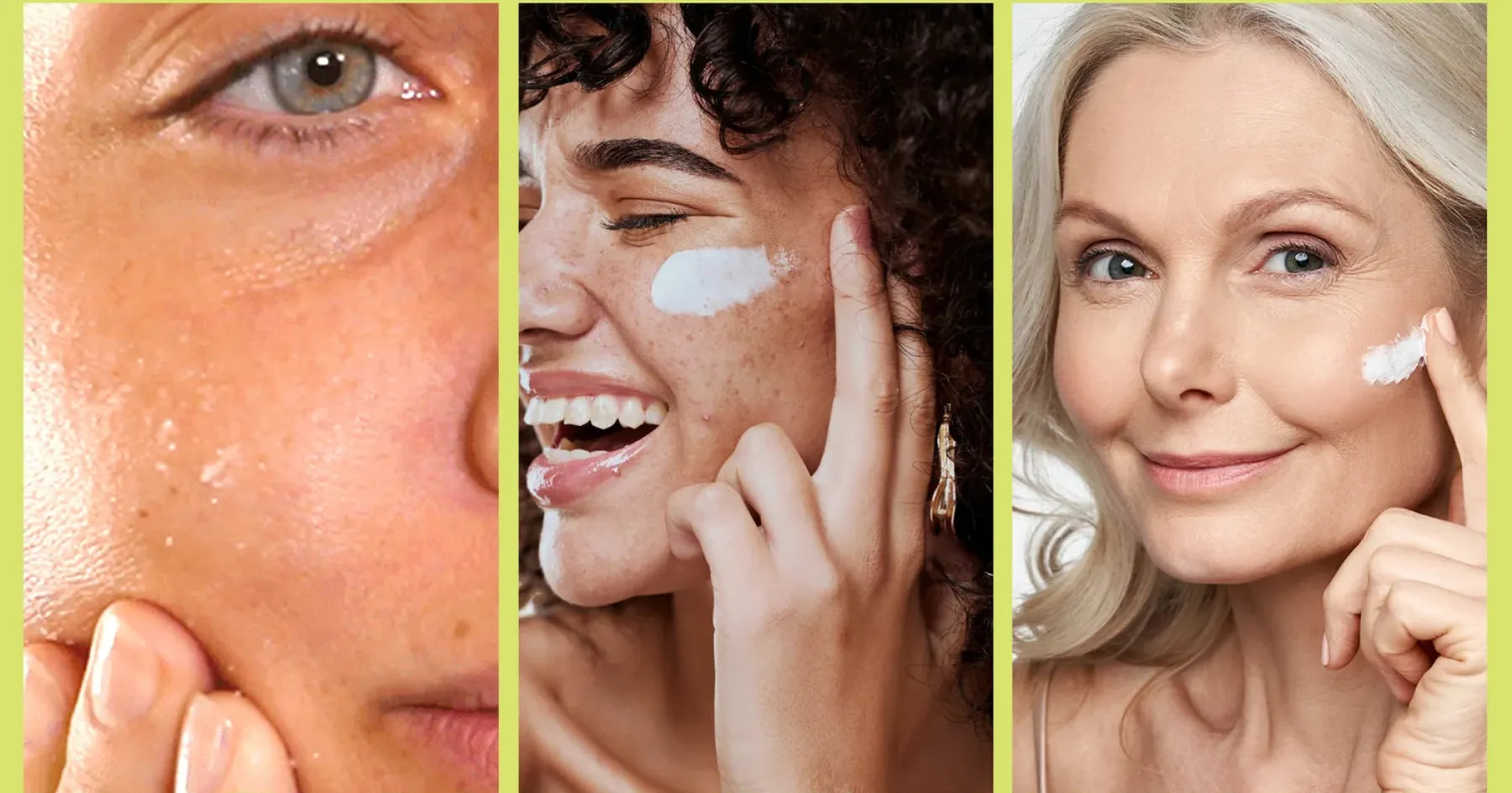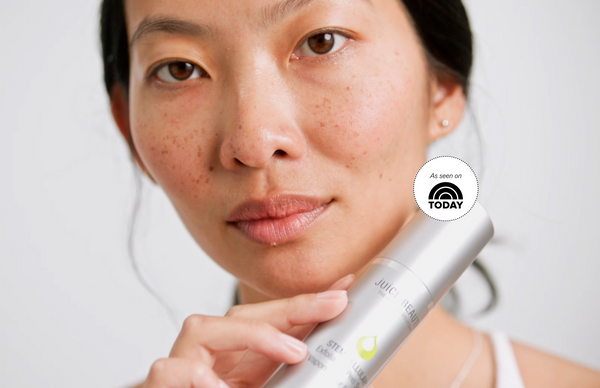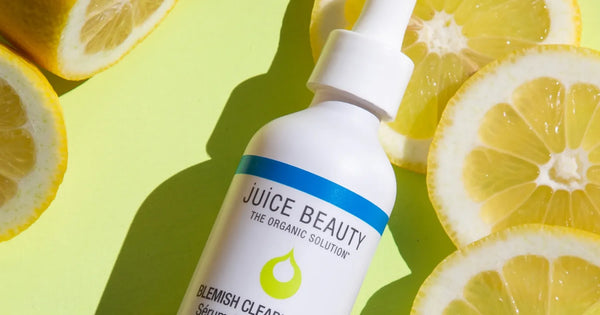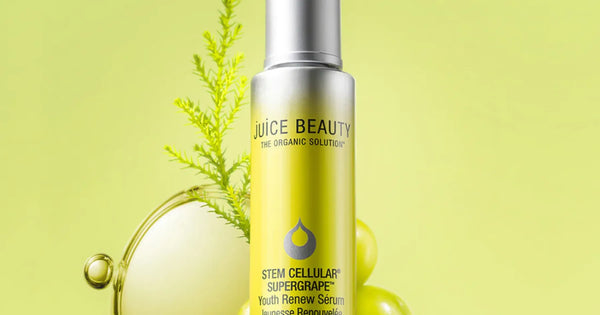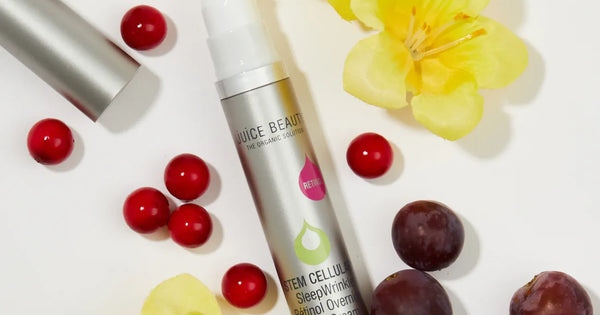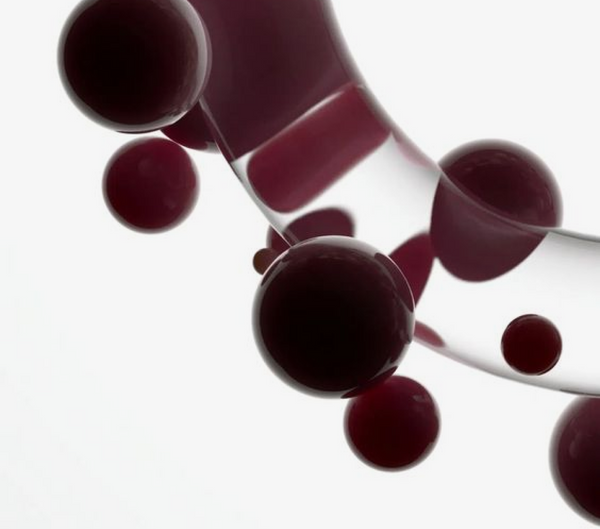If there’s one product most of us would say we can’t live without, it’s moisturizer. Moisturizer is the foundation of any skincare routine, but using the right amount is crucial for achieving the best results.
In this guide, we’ll talk about the ins and outs of moisturizer application, helping to make sure your skin gets the hydration it needs without overdoing it.
What Exactly Is Moisturizer?
Moisturizer is a natural skincare product designed to hydrate and nourish the skin. It typically contains a combination of ingredients that:
- Lock in moisture: Help retain water in the skin to prevent dryness.
- Support skin barrier function: Strengthen the outer layer of skin to protect against environmental stressors.
- Provide essential nutrients: Delivers vitamins and antioxidants that promote healthy skin.
At Juice Beauty, we believe in the power of organic, plant-based ingredients to deliver effective moisturization without harmful chemicals or unnecessary ingredients. Our Stem Cellular Anti-Wrinkle Moisturizer, for example, harnesses the power of grape stem cells and vitamin C to hydrate and rejuvenate the skin.
In a six-week instrument-measured study, 100% of users showed an increase in skin hydration, and 88% noticed a reduction in fine lines and wrinkles.
What Are the Main Types of Moisturizers?
Moisturizers come in various forms, each catering to different skin types and concerns:
- Creams: Thick and rich, these are ideal for dry or mature skin. People with dry skin should look for a moisturizer that contains rich ingredients like shea butter, ceramides, and glycerin.
- Lotions: Lighter than creams, lotions are suitable for normal to combination skin. If you have this skin type, look for a moisturizing lotion that combines humectants and occlusive agents, such as glycerin and dimethicone.
- Gels: Water-based and refreshing, gels are perfect for oily or acne-prone skin. For our oily-skinned friends, a gel formulation that contains hyaluronic acid or a similar humectant is the right choice. Our Prebiotix Hydrating Gel Moisturizer fits the bill perfectly.
Understanding your skin type can help you choose the right moisturizer that meets your specific needs.
What Are the Benefits of Moisturizer?
Regular use of moisturizer offers numerous benefits for your skin.
Hydration
Moisturizer has the power to keep your skin plump and supple by providing essential moisture. Moisturizing creams, lotions, and gels do this better than any other skincare product on the market.
Protection
A good moisturizer will strengthen the skin barrier against environmental stressors such as pollution and the sun’s harmful rays. If your moisturizer has SPF, it offers an additional layer of protection.
Anti-Aging
Keeping your skin moist and hydrated helps reduce the appearance of fine lines and wrinkles by maintaining elasticity. If you choose a moisturizer with ingredients like retinol or vitamin C, it packs an extra punch of anti-aging power.
Balancing
Using moisturizer regularly can help regulate oil production in both dry and oily skin types, which prevents excess shine or dryness.
Why Is the Right Amount of Product so Important?
Using the correct amount of moisturizer is crucial for a few reasons:
- Efficacy: Too little won’t provide adequate hydration, while too much can lead to clogged pores or greasiness.
- Cost-effectiveness: Using the right amount of product ensures that you’re not wasting product; overusing can lead to unnecessary expenses.
- Skin Health: Overuse can potentially irritate the skin or disrupt its natural balance.
Finding Your Perfect Amount
Determining how much moisturizer you need can depend on several factors:
- Skin type: Oily skin may require less product than dry or sensitive skin.
- Climate: In humid climates, you may need less moisturizer compared to dry or cold environments.
- Product formulation: Some moisturizers are more concentrated than others; always check product instructions, and try products out for yourself to see how they feel on your skin.
How Much Moisturizer Should I Use?
The ideal amount of moisturizer depends on skin type, climate, and product formulation. However, a general guideline is to use about a nickel-sized amount for your face and neck.
For specific areas:
- Face: Use approximately ¼ teaspoon
- Neck: Apply approximately ½ teaspoon
- Decolletage (chest area): Use another ½ teaspoon
Of course, you know your skin best. These are general recommendations, but much of moisturizer application is going to vary depending on your specific skin. Very dry skin might soak up moisturizer like a sponge, while oily skin often needs less moisturizer.
In What Order Should You Apply Skincare Products?
To maximize the benefits of your skincare routine, follow this order of application:
- Cleanser: Start with a gentle cleanser to remove impurities.
- Toner: Apply toner to balance pH levels and prepare your skin for the next step.
- Serum: Use targeted serums that address specific skin concerns like pigmentation or fine lines. If you’re looking for light moisture and dark spot correction, check out our Green Apple Age Defy Serum. At Juice Beauty, all of our products start with our Bio70+ technology, which ensures each formula has a base of at least 70% organic ingredients — creating the perfect antioxidant-rich environment for our potent actives.
- Eye Cream: Apply eye cream gently around the delicate eye area.
- Moisturizer: Lock in hydration with your moisturizer of choice.
- Sunscreen (during the day): This is a non-negotiable. Protect your skin from UV damage with broad-spectrum sunscreen.
Nighttime Routine Skincare Tips
In the evenings, the only thing that can truly change is that you don’t need to apply sunscreen. However, some people prefer to use a thicker cream at night for extra hydration, even if they use a lighter lotion or gel during the day.
For nighttime care, consider incorporating our Stem Cellular Anti-Wrinkle Overnight Cream as your final step for intensive repair and rejuvenation while you sleep. In a 4-week study, 91% of participants reported improved skin moisture replenishment overnight.
What To Keep in Mind When Moisturizing
There are a few special considerations to take into account:
Seasonal Changes
Your moisturizing needs may change with the seasons, especially if you live in a part of the world where the differences between the seasons are stark. Those who experience harsh winters will have to make big changes to their skincare when the weather gets cold.
- In winter, opt for thicker creams that provide extra protection against cold air. Don’t forget to wear your sunscreen, even in winter months.
- In summer or late spring, lighter lotions or gels may be more suitable due to increased humidity in the air.
Skin Conditions
If you have specific skin conditions such as eczema or rosacea, consult with a dermatologist for personalized recommendations on moisturizing products that cater to sensitive or compromised skin barriers. When in doubt, seek the advice of a medical professional.
What Are Some Common Mistakes When Applying Moisturizer?
To ensure you’re getting the most out of your moisturizer application, avoid these common pitfalls:
- Skipping It Entirely: Even oily skin types need hydration; skipping moisturizer can lead to increased oil production as your skin tries to compensate for dryness (we know, it’s counterintuitive, but skipping the moisturizer makes skin even MORE oily!)
- Applying on Dry Skin: Always apply serums and moisturizers on slightly damp skin after cleansing or toning. This helps lock in moisture much better.
- Too Much Exfoliation: Many who suffer from dry skin think that they should scrub all the flakiness from their skin before applying moisturizer. While this seems like it makes sense, it can actually strip skin of moisture.
- Using Too Much Product: More isn’t always better; over-applying can lead to clogged pores and breakouts.
- Using Too Little Product: A lack of product can mean that you won’t get the promised results. You need the Goldilocks method when it comes to moisturizer: it needs to be just right.
The Bottom Line
Understanding how much moisturizer to use is key to maintaining healthy, radiant skin. Pay attention to how your skin feels, as application “rules” may vary depending on skin type, season, or the product you’re using.
By following the guidelines provided and choosing high-quality organic products like those offered by Juice Beauty, you can ensure your skin receives optimal hydration and nourishment. What you put on your skin is just as important as what you put in your body. So, choose wisely, and choose Juice.
Sources:
Moisturizers: Do They Work? | Harvard Medical School Health Publishing
How To Pick the Right Moisturizer for Your Skin | American Academy of Dermatology Association
